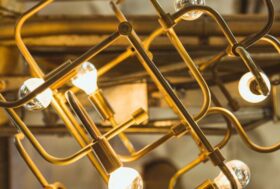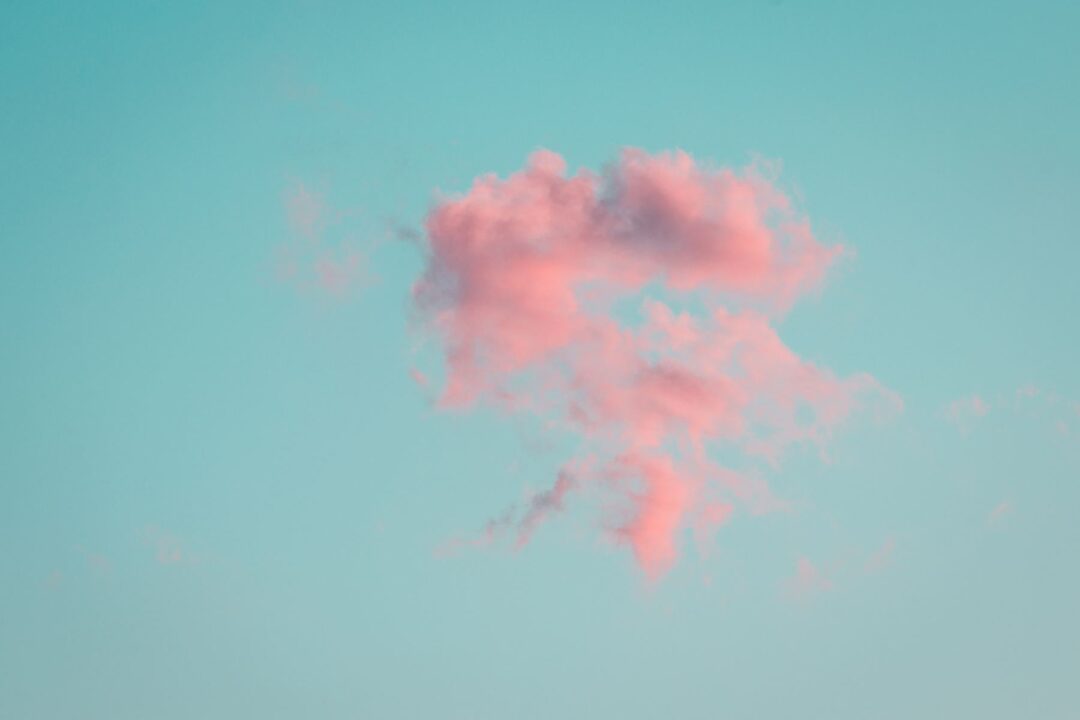Early science: What is it and how do we support it?


Dr Sarah Earle, Bath Spa University, UK @PriSciEarle
Why consider early science?
The first images of science that come to mind often contain white coats, test tubes and Bunsen burners, but science is much broader than this. Scientists like David Attenborough and Jane Goodall study the natural world on location, while others look to the stars like Maggie Aderin-Pocock or care for our health like Sarah Gilbert and Chris Whitty. We use science in every aspect of our daily lives and many jobs require scientific knowledge, from firefighters and electricians to hairdressers and dentists. Awareness of the important role of science and scientists is something that is built from an early age, something that needs to be representative of the community in which you work, to ensure that children grow up thinking that ‘science is for me’ (see Nag Chowdhuri et al., 2021 for Science Capital research, resources and more on this).
Science is not just for scientists or to provide a pathway to future jobs. Science is a way of thinking and questioning about the world, as well as a body of knowledge built up over time. Exploration and enquiry are how we develop our understanding about the world. Observing with all senses, raising questions, trialling, testing and thinking about the evidence in front of us: these could describe any young child’s explorations, but they are also the methods of science enquiry. Such enquiry can be seen in three of the characteristics of effective teaching and learning, ‘playing and exploring; active learning; creating and thinking critically’ (DfEDepartment for Education - a ministerial department responsi, 2021, p. 16), demonstrating the relevance of science beyond the ‘specific area’ of ‘Understanding the World’ in the statutory guidance for England.
What does early science look like?
Children develop their own scientific ideas from the outset. Sensory experience of the world builds foundational concepts – for example, naïve physics ideas about the cause and effect of pushing or dropping, or naïve biological ideas about moving and growing or the naming of categories of animals (Goswami, 2015). This is not to say that sole discovery will necessarily lead to the development of science concepts; collaboration and communication with others are important in aiding understanding and developing the language with which to express scientific ideas.
Young children learn through play and such practical exploration is the precursor to later science investigations (Johnston, 2010). Open-ended first-hand experiences that are owned by the child are motivating and engaging, where children are able to proceed at their own pace – there are no time constraints for an infant exploring a rattle with their mouth or a toddler repeatedly pouring water between pots. Concrete sensory experiences support the development of the key scientific skill of observation, with children using their senses to explore the world. The Creative Little Scientists European study found ‘playful experiences’ and ‘hands-on, minds-on exploratory engagement’ (Cremin et al., 2015, p. 415) to be essential elements for scientific development. ‘Minds on’ notes the importance of the thinking and dialogue that go alongside the exploration, which may be supported by the adult.
What is the role of the practitioner in supporting playful science exploration?
The question of whether to intervene or not is a universal dilemma in early childhood education and care, where the practitioner is continuously having to decide whether their interaction is likely to be effective or to add something to the experience (Fisher, 2016). Such interventions might include providing a new artefact, offering an alternative method, describing with new vocabulary or asking a question. Adult intervention like this can create opportunities for discussion – the ‘minds on’ element noted above. Sometimes such interactions can build ideas together through sustained shared thinking (Siraj-Blatchford et al., 2002). The practitioner can help to develop vocabulary by modelling language use (see PLAN EYFS, www.planassessment.com/copy-of-plan-examples-of-work-teacher, for vocabulary suggestions). The adult also acts as a role model for science, showing interest and a sense of wonder about the world. We do not need to know the answer to all of the children’s questions; raising questions that cannot be answered (yet) is what science is all about.
Fleer (2022) describes a continuum of play and science learning, with opportunities for both child-and adult-initiated activities. Fleer’s continuum includes a ‘Conceptual PlayWorld’, whereby a part of the setting is transformed to support problem-solving in imaginary contexts such as Robin Hood’s Sherwood Forest. The use of story books and imaginary play provides rich opportunities for dialogue and problem-solving; some examples can be found at STEM Learning (www.stem.org.uk/teaching-science-through-stories).
How can we create an environment supportive of early science?
Many daily interactions are ‘in the moment’ decisions, but the setting up of an enabling environment also provides opportunities for early science. Forrester et al. (2021) describe the importance of exposure to a diverse and rich environment. This includes open-ended materials, such as heuristic treasure baskets for babies and toddlers (containing objects rather than ‘toys’) and ‘loose parts’ construction materials for older children. Diverse and ‘open’ materials promote exploration and child agency (Cremin et al., 2015). Further examples of practice can be seen in the ‘Play, observe and ask’ Early Years section of the Primary Science Teaching Trust website at: https://pstt.org.uk/resources/curriculum-materials/eyfs-science.
Provision of resources can stimulate inclusive discussions of shared experiences in the setting, meaning that those without such prior experiences are not disadvantaged. Such a social justice agenda is an important reason to consider early science, with researchers finding that gaps in general knowledge and science in kindergarten persist into later childhood, and proposing that early opportunities for science could help to ‘narrow the gap’ (Morgan et al., 2016).
Continuous provision areas like sand, water, construction or a ‘mud kitchen’ can provide a fertile ground for playful science explorations. Such exploration can sometimes be enhanced by playing in parallel with the children, verbalising the ‘wonderings’ and ‘what ifs’. The TAPS Early Years project is currently collating a range of Learning Stories, which will soon be openly accessible on the TAPS website (https://pstt.org.uk/resources/curriculum-materials/assessment). Such Learning Stories exemplify early science explorations – both telling the learner’s journey and providing examples of child- or adult-initiated activities that could inspire practice in other settings.
The use of outdoor spaces is an essential part of Early Years provision, particularly for science, where experience outdoors supports understanding. For example, ‘bug’ spotting and gardening support the development of biological concepts, ‘messy play’ supports the development of ideas about materials (early chemistry) and playground or vehicular play support early physics. Campbell and Speldewinde (2018) propose that the ‘bush kinder’ environment (Australian forest school) supports the development of a range of science ideas, like exploring changes in weather over time. Appreciation of the local environment is also integral to recognising value in the natural world and building education for sustainability.
In summary
The importance of early science is gaining recognition, but we do not want to see a ‘backwash’ of watered-down activities from older year groups (Earle, 2022); it is important that the Early Years retains its child-centred focus. Early science should start from where the child is, enhancing the provision by providing time and resources for playful exploration, supported by rich dialogue with peers and interested adults.
To learn more about the research behind this article, please follow the link below:
- Earle S (2022) Early science research summary: Use of play and role of the adult. Journal of Emergent Science 22: 5-12. Available at: https://www.ase.org.uk/
resources/journal-of-emergent- science/issue-22/research- review-early-science-research- summary-use-of (accessed 9 June 2022).
References
- Campbell C and Speldewinde C (2018) Teaching science in Australian bush kindergartens: Understanding what teachers need. Journal of Emergent Science 15: 37–45.
- Cremin T, Glauert E, Craft A et al. (2015) Creative Little Scientists: Exploring pedagogical synergies between inquiry-based and creative approaches in Early Years science. Education 3–13 43(4): 404–419.
- Department for Education (DfE) (2021) Statutory framework for the early years foundation stage: Setting the standards for learning, development and care for children from birth to five. Available at: https://assets.publishing.service.gov.uk/government/uploads/system/uploads/attachment_data/file/974907/EYFS_framework_-_March_2021.pdf (accessed 16 May 2022).
- Earle S (2022) Early science research summary: Use of play and role of the adult. Journal of Emergent Science 22: 5-12.
- Fisher J (2016) Interacting or Interfering? Improving Interactions in the Early Years. Maidenhead: Open University Press.
- Fleer M (2022) Balancing play and science learning – developing children’s scientific learning in the classroom through imaginary play. Journal of Emergent Science 22: 13–21.
- Forrester G, Pugh J, Hudson R et al. (2021) Understanding the World in the Early Years Foundation Stage: Practitioners’ perspectives of best practice and effective provision Education 3–13. Epub ahead of print 22 May 2021. DOI: 10.1080/03004279.2021.1930095.
- Goswami U (2015) Children’s cognitive development and learning. Cambridge Primary Review Trust. Available at: https://cprtrust.org.uk/wp-content/uploads/2015/02/COMPLETE-REPORT-Goswami-Childrens-Cognitive-Development-and-Learning.pdf (accessed 16 May 2022).
- Johnston J (2010) Exploration and investigation. In: Cooper L, Johnston J, Rotchell E et al. (eds) Knowledge and Understanding of the World. London: Continuum, pp. 8–29.
- Morgan P, Farkas G, Hillemeier M et al. (2016) Science achievement gaps begin very early, persist, and are largely explained by modifiable factors Educational Researcher, 45(1): 18–35.
- Nag Chowdhuri M, King H and Archer L (2021) The Primary Science Capital Teaching Approach: teacher handbook. London: University College London. Available at: www.ucl.ac.uk/ioe/departments-and-centres/departments/education-practice-and-society/stem-participation-social-justice-research/primary-science-capital-project
- Siraj-Blatchford I, Sylva K, Muttock S et al. (2002) Researching effective pedagogy in the Early Years. DfES Research Report 356.. Available at: https://dera.ioe.ac.uk/4650/1/RR356.pdf (accessed 16 May 2022).










